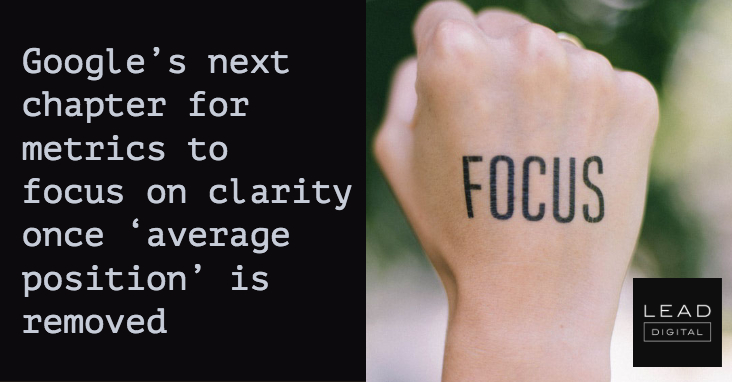 Fred Vallaeys explains why advertisers need to rethink bidding strategies and position metrics now that Google has announced it will sunset one of its oldest metrics later this year.
Fred Vallaeys explains why advertisers need to rethink bidding strategies and position metrics now that Google has announced it will sunset one of its oldest metrics later this year.
Average Position was one of the original metrics in Google Ads when they launched their search advertising product called AdWords. But as search advertising has evolved, what used to be a primary metric for making optimization decisions has lost its usefulness and so Google has announced that it will disappear later this year.
This means advertisers will need to rethink some dated bidding strategies, update reports they share with stakeholders and figure out how the new position metrics can replace what is being deprecated. But first, let me share my take on why this change is being made.
Why ‘average position’ is a poor metric to understand position
Historically the average position metric was useful because ads reliably showed up in consistent locations on the page. Knowing the average position of an ad meant you knew where your ad showed on a web page. Its physical “position” on the page correlated to the “average position” in reports.
For example, in the earliest days of AdWords, premium ads that were sold to big companies on a CPM basis were shown above the search results. Ads on the right side were reserved for smaller advertisers who paid on a CPC basis through what was then known as AdWords Select. So if you were an AdWords Select advertiser and your ad was reported as having an average position of 1, you understood it was the first ad on the right side of the SERP.
But then Google realized that the ads they were putting in premium locations on the page from advertisers paying on a CPM basis were making less money than the CPC ads on the right side. So they merged the two advertising programs and made all advertisers compete for all slots on the page based on Ad Rank, a metric comprised of the CPC bid and the CTR. Position still equated to a physical location on the page, except for the fact that Google made one more change in its effort to ensure only the most relevant ads would occupy the top of the page. – Read more



